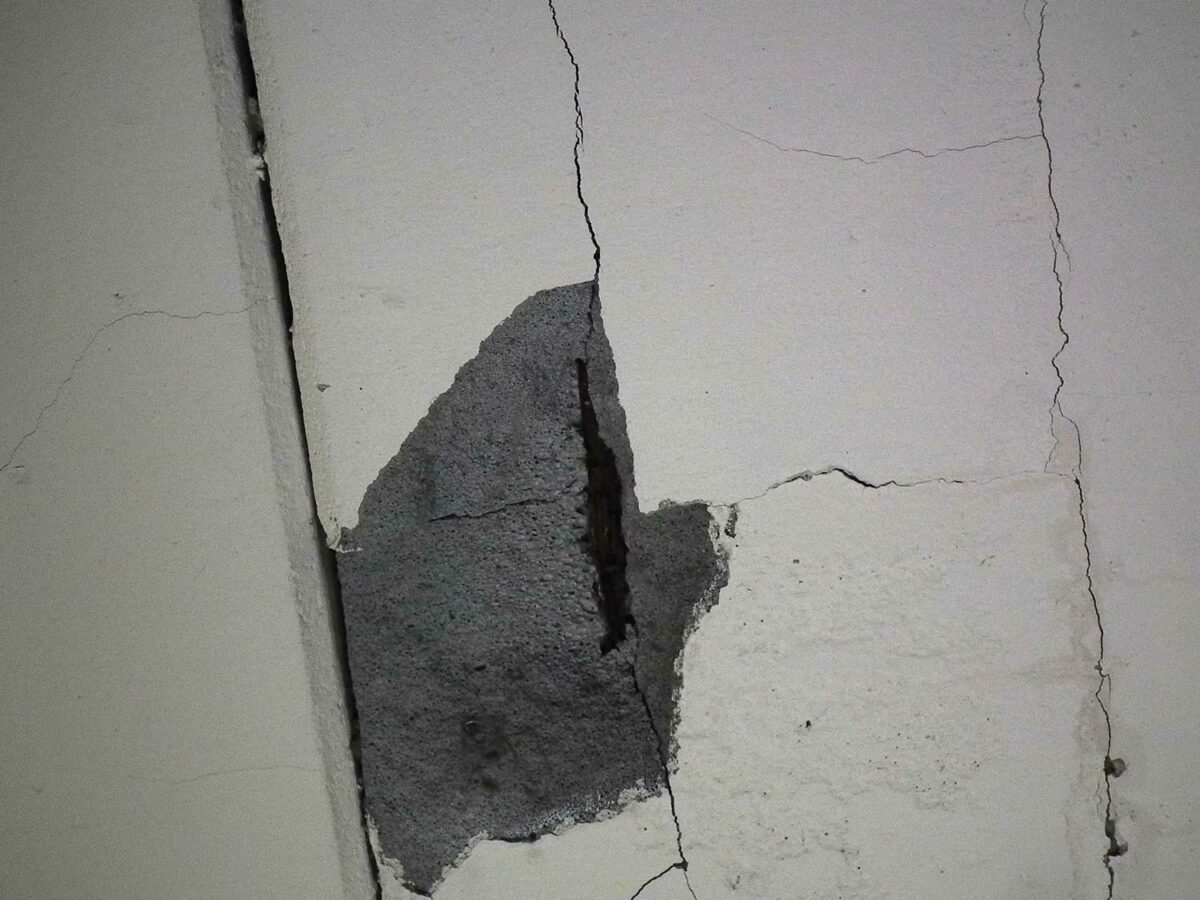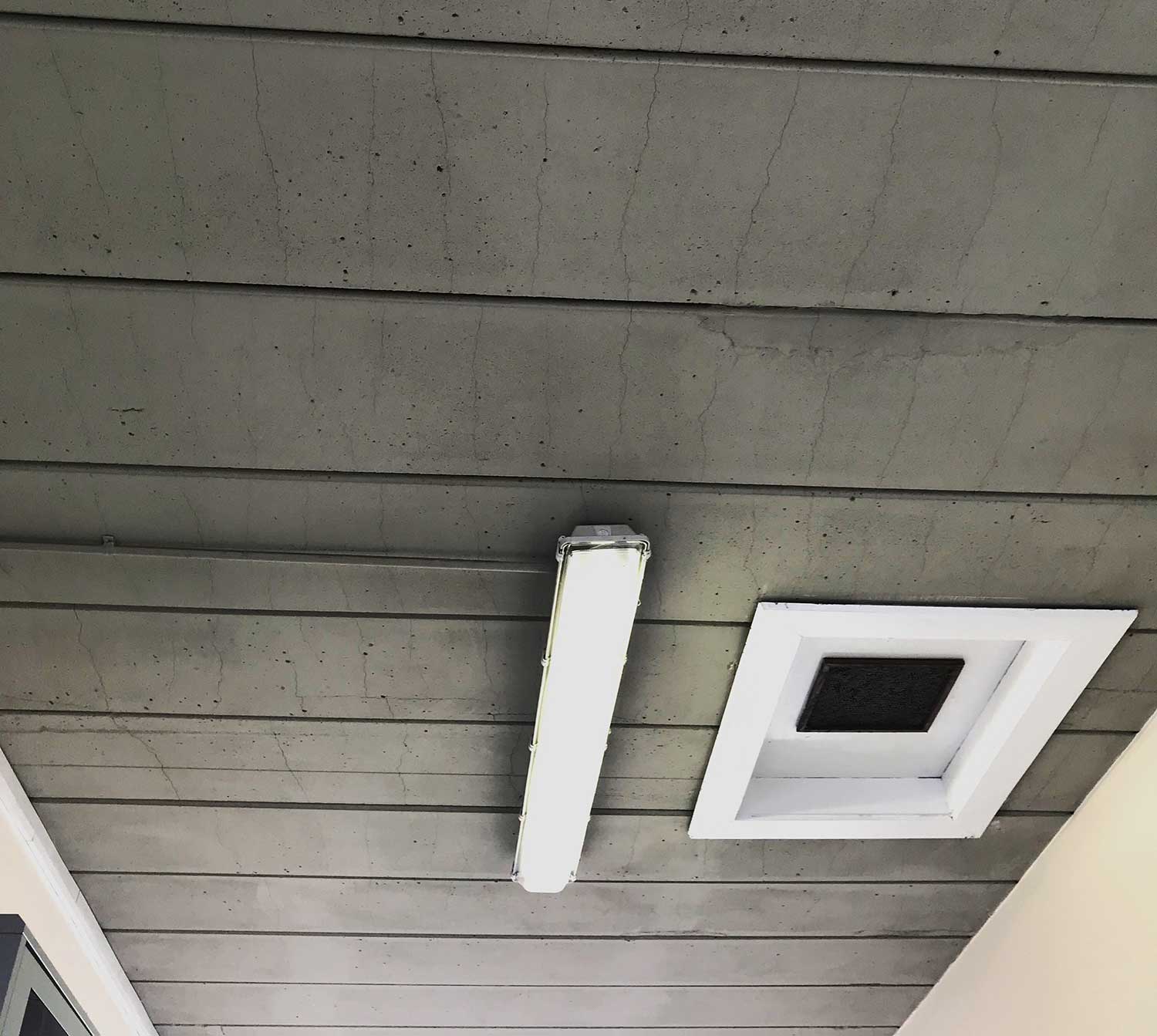You can also listen to Rob Wallbank discussing this topic on Greatest Hits Radio here
Brief History of RAAC Use
Reinforced Autoclaved Aerated Concrete (RAAC) is a construction material that was used to form precast elements over a period of time in the late 20th century, between the 1950’s and the 1990’s. It differs from traditional concrete in that it has a more open structure with more air voids, which allows it to be much lighter but unfortunately had unforeseen consequences in terms of robustness. Specifically, the open structure means that the concrete does not always form a consistent bond with the steel reinforcement, as well as allowing water to penetrate the material. This can then come into contact with the reinforcing steel bars more easily than it otherwise would, leading to ongoing corrosion of the steel.
Another unintended outcome of the use of such elements concerned the curtailment of reinforcement within the concrete. In some instances it has been found that the steel stopped further from the ends of the planks than it should. If the planks have not been installed with sufficient bearings it can result in reduced strength at this critical area.
The elements that were most commonly specified for RAAC use were roofs, floors and walls.
Recent Developments
In February 2022 the Institution of Structural Engineers produced guidance for engineers for investigating and assessing the condition of RAAC planks in roofs, floors and walls. This document included suggested approaches to remediation.
This was expanded upon in April 2023 with guidance on assessment of risk based on certain on-site parameters.
Recently, on 31st August 2023, the BBC news issued an article concerning a Department of Education document served to many schools regarding buildings which are known to have RAAC planks present. Schools have been ordered to close these buildings with immediate effect.
https://www.bbc.co.uk/news/education-66673971
Possible Future Outcomes
Although RAAC is no longer in use in the UK, the construction of many institutional buildings, as well as some residential dwellings, utilised its lightweight and ease of installation in the mid-to-late 20th century. The recent headlines alerted its use in school construction, but many more structures still have RAAC elements that are, as yet, unrecognised.
It is only a matter of time before its widespread use elsewhere is recognised and further action must be taken, either by central government, or by owners and operators in the private sector.
RWA Services in Regard to RAAC Elements
RWA Consulting have been investigating and assessing RAAC structures for nearly a decade, long before guidance became official. We have investigated such structures for church dioceses, local authorities and private schools and we have provided services throughout the process of investigation and remediation including;
- Identification of RAAC use in structures
- Assessment of the condition of RAAC elements
- Design of additional support structures to RAAC elements
- Design of structures to replace RAAC planks
If you have a building constructed between the 1950’s and 1990’s that has precast concrete floors or roofs it may have RAAC elements which could be in danger of suffering irretrievable damage, or even collapse. RWA Consulting can provide surveys of floor, roof and wall structures to confirm whether or not you have RAAC elements to give you peace of mind that users of the building are safe.
If RAAC elements are found in a building you own or manage, RWA Consulting can provide surveys to assess the risk level of the RAAC elements and help you develop a management plan.
In the unfortunate event that there are RAAC planks which are at high risk, RWA Consulting can provide the design necessary to remediate or replace the defective elements, so you can continue with operating in confidence that the building is safe.
Please contact us by email at engineer@rwaconsulting.co.uk, or ring the office on 01296 624924, to contact one of our staff and find out if your buildings could be at risk.


